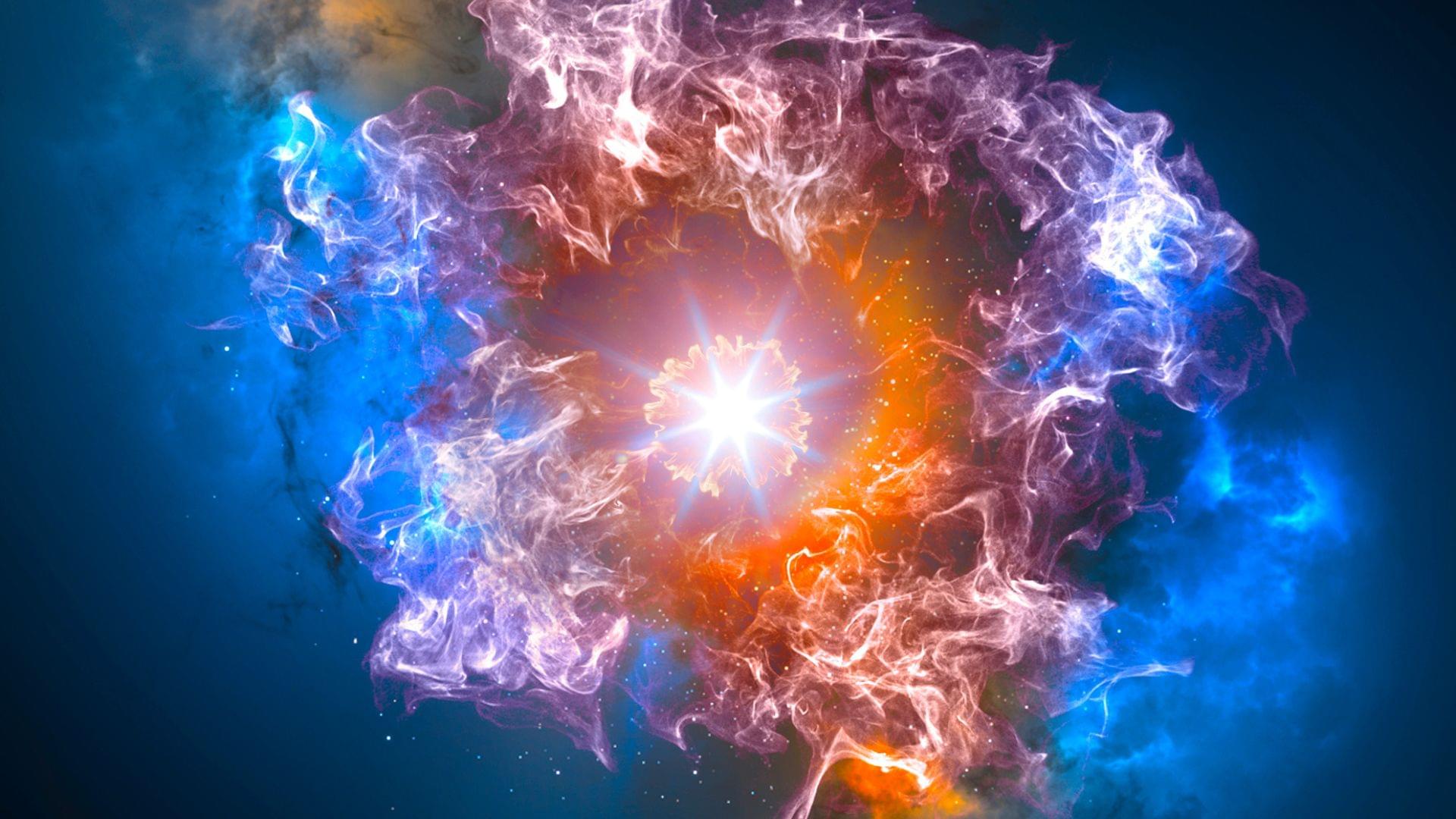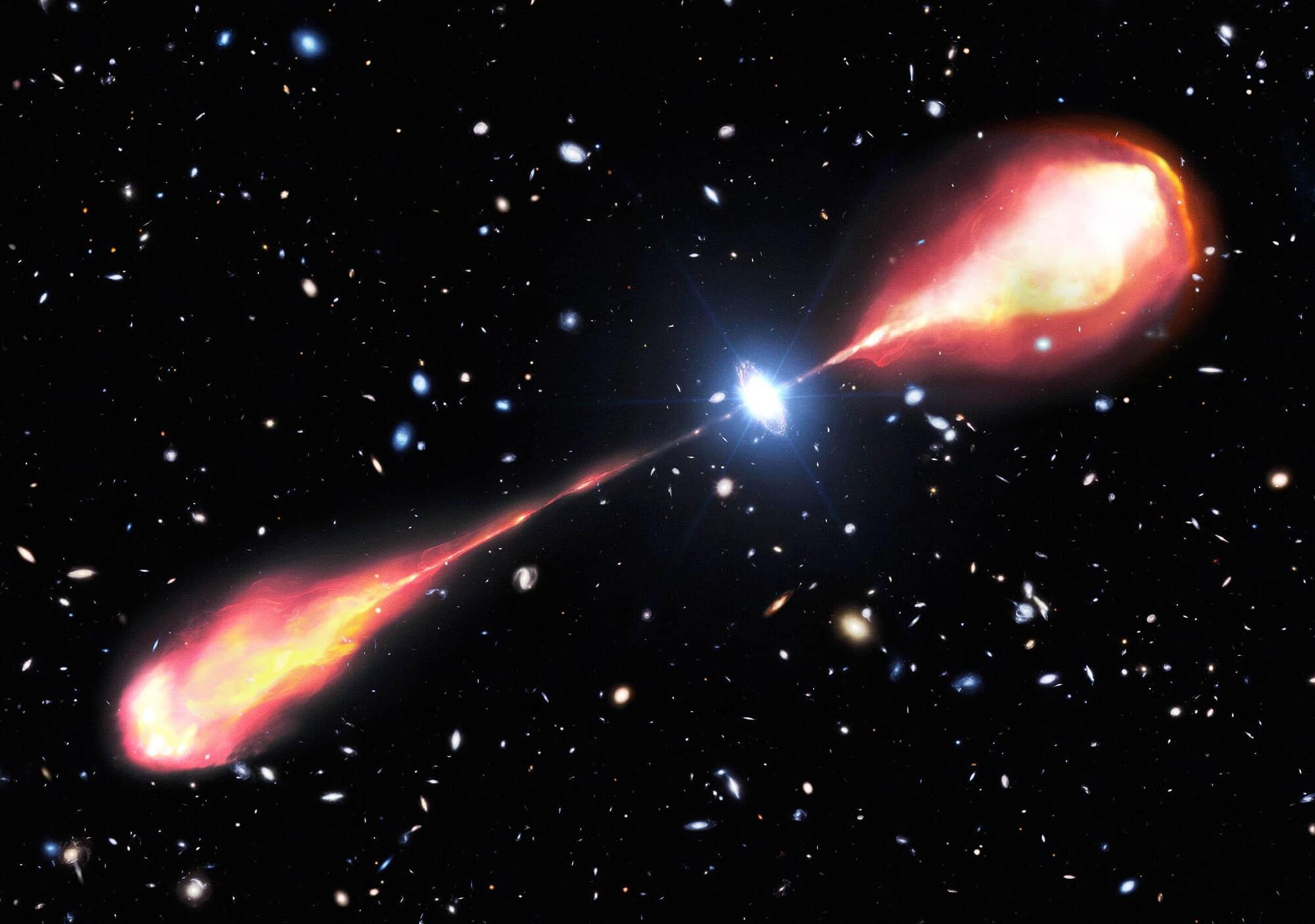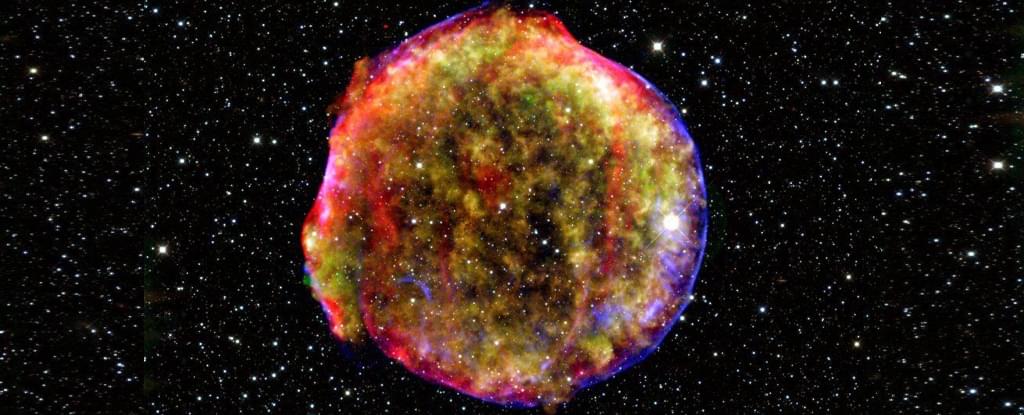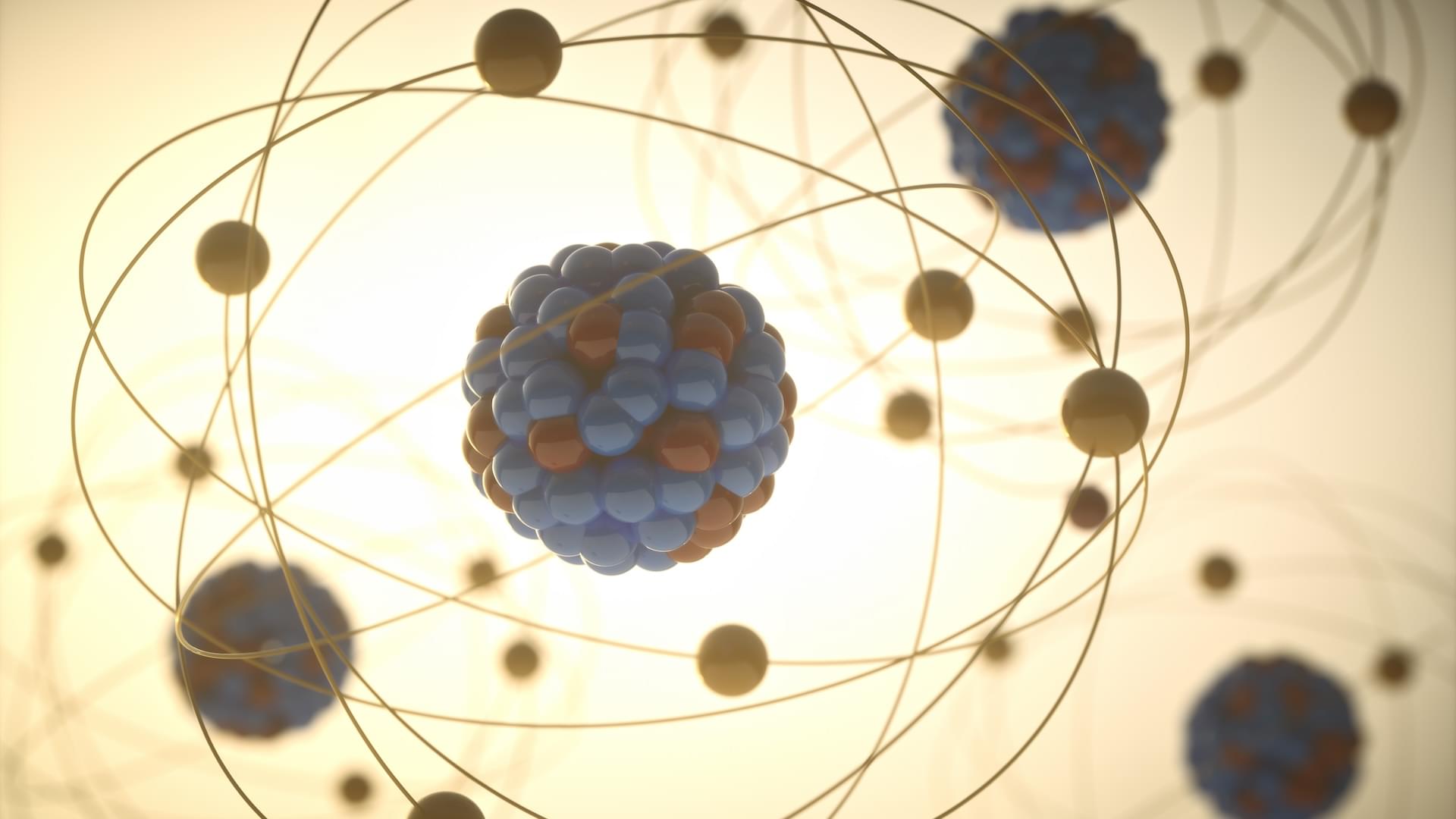Italian scientists have made a breakthrough in understanding quark-gluon plasma, the universe’s state moments after the Big Bang.



That hurdle has now been cleared. A newly analyzed radio image reveals twin lobes stretching roughly 66,000 light-years on each side of a quasar called J1601+3102.
Because the radio waves began their trip across space more than 12.1 billion years ago, the observation shows the quasar as it was when the universe had completed only about nine percent of its history.
This particular quasar, J1601+3102, belongs to a youthful universe – it flared into view when the cosmos was less than 1.2 billion years old.

Somewhere in our galaxy are engines capable of driving atomic fragments to velocities that come within a whisker of lightspeed.
The explosive deaths of stars seems like a natural place to search for sources of these highly energetic cosmic bullets, yet when it comes to the most powerful particles, researchers have had their doubts.
Numerical simulations by a small international team of physicists may yet save the supernova theory of cosmic ray emissions at the highest of energies, suggesting there is a brief period where a collapsing star could still become the Universe’s most extreme accelerator.


A study published in Astronomy & Astrophysics has identified four previously unknown primordial open cluster (OC) groups in the Milky Way.
Open clusters, loose assemblies of stars born from the same giant molecular cloud (GMC), are typically considered to form in isolation. However, the newly discovered OC groups consist of multiple member clusters originating from the same GMC, formed through sequential star formation processes.
Notably, two of these groups, labeled G1 and G2, appear to have formed via a hierarchical mechanism triggered by multiple supernova (SN) explosions.
Very soon after the Big Bang, the universe enjoyed a brief phase where quarks and gluons roamed freely, not yet joined up into hadrons such as protons, neutrons and mesons. This state, called a quark-gluon plasma, existed for a brief time until the temperature dropped to about 20 trillion Kelvin, after which this “hadronization” took place.
Now a research group from Italy has presented new calculations of the plasma’s equation of state that show how important the strong force was before the hadrons formed. Their work is published in Physical Review Letters.
The equation of state of quantum chromodynamics (QCD) represents the collective behavior of particles that experience the strong force—a gas of strongly interacting particles at equilibrium, with its numbers and net energy unchanging. It’s analogous to the well-known, simple equation of state of atoms in a gas, PV=nRT, but can’t be so simply summarized.

In a new Physical Review Letters study, researchers have successfully followed a gravitational wave’s complete journey from the infinite past to the infinite future as it encounters a black hole.
Reported by scientists from the University of Otago and the University of Canterbury, the study represents the first time anyone has captured the full cause-and-effect relationship of gravitational wave scattering in a single simulation.
The researchers are tackling the scattering problem in gravitational physics. In other words, they want to understand what happens to gravitational waves when they encounter massive objects (like black holes) and scatter off them.

The origin of lithium (Li), the third element of the periodic table, has long been shrouded in mystery. This element, commonly found in cosmic rays as two stable isotopes, 6 Li and 7 Li, is crucial to understanding the origins of the universe and the evolution of its chemical elements.
In a recent study, an international team of researchers used the Alpha Magnetic Spectrometer (AMS-02) aboard the International Space Station to measure the cosmic-ray fluxes of 6 Li and 7 Li based on data accumulated from May 2011 to October 2023.
Based on information from over 2 million nuclei amassed across 12 years, the team formulated a hypothesis that strengthens the case for one possible origin of lithium while challenging another previously accepted explanation.


“The new model can account for both structure formation and stability, and the key observational properties of the expansion of the universe at large, by enlisting density singularities in time that uniformly affect all space to replace conventional dark matter and dark energy,” research author Richard Lieu, a physics professor at The University of Alabama in Huntsville, said in a statement.
The dark universe is poses such a huge conundrum for scientists because it suggests that only 5% of the matter and energy in the cosmos comprises what we see around us on a day-to-day basis in stars, planets, moons, our bodies — and everything else, really.
In other words, we have no idea what the other 95% of the cosmos is.